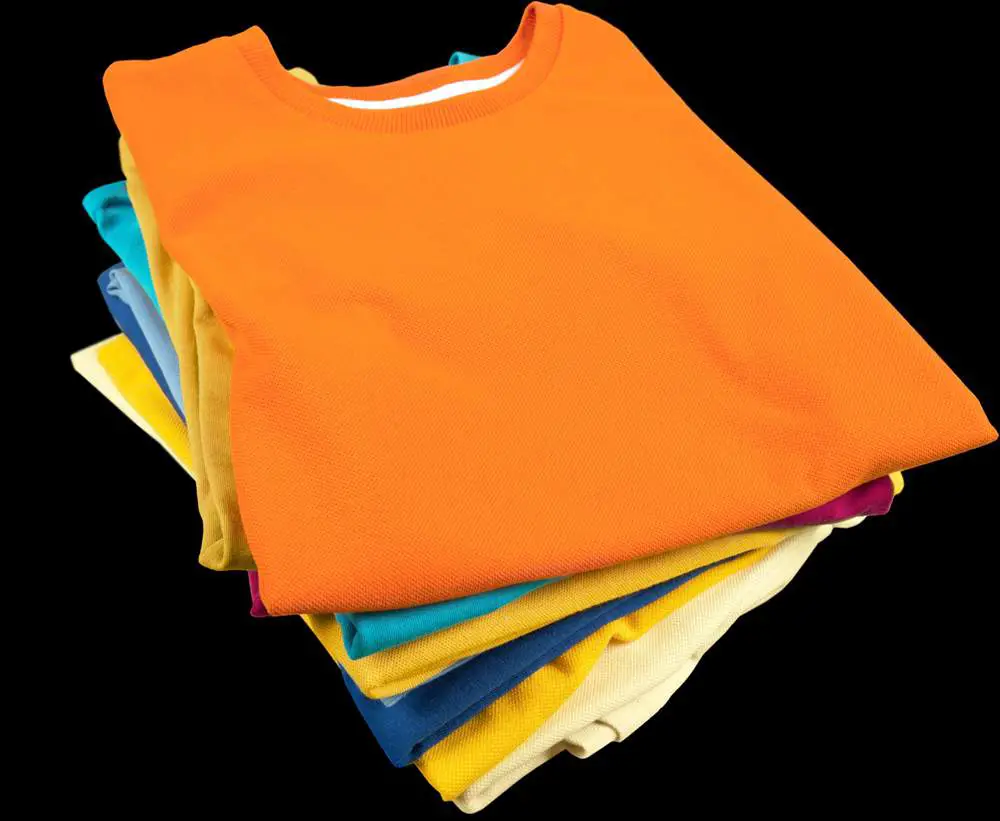
Colour bleed in clothing is a very common laundry problem that can leave you with ruined garments. However, with the right techniques, you can rescue clothes from dye transfer disasters. This comprehensive guide will provide everything you need to know to tackle colour bleed like a laundry pro.
Table of Contents
What Factors Cause Colours to Bleed in the Wash?
To solve colour bleeding issues, it helps to first understand what causes them. There are several key factors that lead to dye transfer and colour fade:
Loose Dyes
The main culprit is loose, unfixed dyes that detach from fabrics during washing. This is especially common with new dark garments like jeans, towels, t-shirts and socks which often contain excess loose dye. Agitation and friction during the wash cycle causes these loose dyes to release and transfer.
Heat
Warm and hot water causes dye molecules to detach more readily. The higher the temperature, the more likely colour bleed will occur. Always wash brightly coloured and dark items in cold water to limit colour transfer.
Detergents
Laundry detergents designed for cold water are formulated to prevent dyes from bleeding. Using a regular detergent in cold water may not hold colours as effectively.
Fabric Types
Natural fabrics like wool, silk, linen and cotton contain dyes with lower levels of colourfastness. Manmade fabrics like polyester and nylon hold coloured dyes more securely during washing.
Age of Garments
As fabrics age and go through repeated wash cycles, the coloured dyes gradually lose their bonding and start to release more easily, causing fading over time.
Chemical Reactions
Bleach, oxygen cleaners and other chemicals can oxidize and physically remove colour from fabrics, causing loss of dye.
By understanding what allows dyes to detach and bleed, you can take steps to avoid potential damage to your clothing.
How to Care for Clothes Prone to Colour Bleeding

Certain fabrics and garments are more prone to bleeding and colour transfer issues. Here’s how to launder them safely:
Dark and Brightly Coloured Items
Wash new colourful garments like jeans, graphic t-shirts, printed dresses and embroidered items separately in cold water for the first 5-10 washes until dye stop bleeding. This keeps them from staining other laundry.
Natural Fabrics
Wool, silk, linen, cotton and other natural fabrics have lower colourfastness. Wash them in cold water using a detergent formulated for delicates or hand washing. Never use bleach products on these fabrics.
White Fabrics
Always wash white garments separately in hot water to keep them looking bright. Add bleach alternative oxygen cleaners as needed to help remove stains while keeping whites white.
Workout Clothes
Activewear contains bright dyes designed to hold up to sweat and friction. However, wash new vividly coloured athletic apparel separately at first to prevent potential colour transfer.
By taking fabric type and colour into account, you can greatly reduce the chance of dyes bleeding in the laundry.
How to Treat Common Causes of Colour Bleeding
Even if you take precautions, colour bleed can still occur in the laundry. Here are tips for treating some common colour bleeding situations:
Dye Transfer
If you notice dye bleeding from a dark garment onto lighter clothes, immediately stop washing the item with other laundry. Wash it separately in cold water until no more dye comes out. This will prevent further staining.
Red Dye Bleed
For reddish stains caused by dye transfer, soak in a dilute solution of bleach alternative or oxygen cleaner, then wash again. Be very careful using real bleach as it may damage the fabric.
Blue Jean Dye
Soak the stained garment in a solution of oxalic acid or rust stain remover, which helps break down and remove stubborn jean dye. Rinse thoroughly and re-wash.
Makeup and Cosmetic Stains
Lipstick, mascara, foundation and other makeup stains can be treated with rubbing alcohol or hairspray before washing. This breaks down the pigments.
Deodorant Marks
Rub stains lightly with petroleum jelly before washing to break down the waxy deodorant residue. For severe cases, try soaking in oxygen bleach first.
Ink and Pen Marks
Apply hairspray to ink stains and let sit for a few minutes before laundering to help dissolve the colour. Rubbing alcohol also works to break up stubborn pen stains.
By tailoring your treatment method to the type of colour bleed, you can help restore clothes to a stain-free status. Always check garment care labels first.
Prevention Tips to Limit Dye Transfer
Stopping colour bleed before it starts is the best way to keep clothes looking their best. Follow these handy tips:
- Wash new darks and brights separately in cold water until colours set.
- Turn clothing prone to bleeding inside out before washing.
- Use colour catcher sheets in mixed loads to absorb loose dyes.
- Allow brightly coloured items to air dry to prevent heat setting stains.
- Use a dye fixing agent on vividly dyed clothes to fortify colours.
- Hand wash items labelled dry clean only using cold water to limit colour transfer.
- Check tags for washing instructions related to dye bleeding.
- Set machine to a gentle, cold water cycle and avoid overloading.
- Group lights, darks and whites in separate loads.
By integrating these best practices into your laundry routine, you can keep colours from bleeding and ruining your fabrics. Follow the guide and your clothes will look vibrant wash after wash.
Frequently Asked Questions About Colour Bleed
Still have some lingering questions about preventing and treating dye transfer? Here are answers to some commonly asked colour bleed questions:
1. How do you set the dyes in new clothing?
- Wash in cold water with laundry detergent formulated for cold water for the first 5-10 washes.
- Use a dye fixing agent or colour sealant before laundering brightly dyed fabrics.
- Allow vividly colored clothing to air dry. Heat can loosen dyes.
2. Can you save a white shirt that had red dye bleed onto it?
Yes, with some work it is possible. First, treat the stain by soaking in a colour remover solution. Then wash with detergent and oxygen bleach. If a hint of the stain remains, try drying the item in sunlight to naturally bleach the fabric.
3. What temperature should you wash dark clothes in?
Always use the coldest water possible when washing darker fabrics and clothing prone to dye transfer. Heat causes more dye to loosen and bleed. Stick to cold water for the first several washes of new dark clothing.
4. Can vinegar stop wool from bleeding dye?
Yes, soaking wool in a vinegar bath helps set the dyes. Mix 1 part white vinegar with 2 parts cold water. Soak wool items for 15 minutes, then rinse thoroughly before washing. The vinegar helps stabilise the fabric dyes.
5. How do you remove dye stains from a dryer?
Clean the inside of the drum with a paste of oxygen bleach and water. Allow it to sit before wiping away. For severe stains, try a paste of powdered dishwasher detergent applied with a scrub brush. Rinse thoroughly.
Following these handy tips and techniques will allow you to do battle with colour bleed and come out with clean, stain-free laundry. Use this comprehensive guide to stop dye transfer in its tracks.